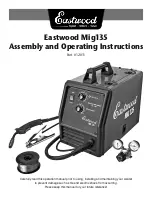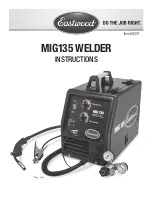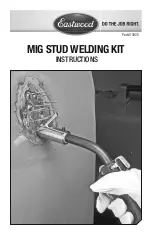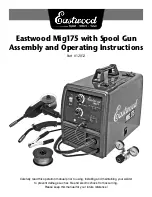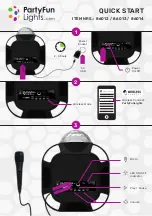
dV-DOSC dV-SUB Manual V3.0
June 2005
81
Tradeoffs Between Intelligibility and Stereo Imaging
The left/right configuration has the advantage of being able to reproduce effects of spatialization and
localization. The area over which these effects is audible depends on the separation of the two arrays
and the orientation of the left array with respect to the right array, defined by the intersection of the
isocontours for both arrays. The more the arrays are rotated or panned onstage (“toed in”), the
greater the area over which stereo imaging is experienced. The less they are rotated onstage and the
more they are aimed offstage, the less stereo imaging is audible. Typically, for concert applications L/R
arrays are separated 15-20 meters and used at zero degrees. Experience has shown that this provides
the best tradeoff between stereo imaging, evenness of horizontal coverage and reduction of the
potential for build up of low frequency and upper mid bass energy in the centre.
Note: Use of the BUMPDELTA delta plate rigging accessory provides a convenient way to vary the panning
angles of flown L/R systems and adjust the amount of overlap and stereo imaging (see the V-DOSC manual
for further details).
There are also tradeoffs with respect to intelligibility when aiming arrays. Psychoacoustically, improved
intelligibility is obtained when the isocontours of both arrays do not overlap too much. Provided that
audience coverage is correct, intelligibility is optimal when only one array radiates on a given audience
area. If two arrays are to cover a common area, intelligibility losses result when the distance separating
the two arrays becomes too great. A standard distance of 20 m (65 ft) is acceptable, however, if
greater separation is specified, one should avoid rotating the arrays onstage too much - this
emphasizes arrival time differences between the arrays, thus degrading intelligibilty.
The decision whether to emphasize intelligibility or stereo imaging mainly depends on the application.
For music applications, more overlap is desired and for speech reinforcement less is more
appropriate.
-85
-75
-65
-55
-45
-35
-25
-15
-5
5
15
25
35
45
55
65
75
85
-10
0
10 20
30
40
50 60 70 80
90 100 110 120 130 140 150
Optimizing coverage and intelligibility
-85
-75
-65
-55
-45
-35
-25
-15
-5
5
15
25
35
45
55
65
75
85
-10
0
10 20 30 40
50 60
70 80 90 100 110 120 130 140 150
Optimizing stereo imaging
Figure 59: Tradeoffs between intelligibility versus stereo imaging
Summary of Contents for dV-DOSC
Page 1: ...Version 3 0 June 2005 dV DOSC dV SUB OPERATOR MANUAL ...
Page 2: ......
Page 18: ...Figure 5 dV DOSC 3 way system configuration ...
Page 143: ...dV DOSC dV SUB Manual V3 0 June 2005 143 Figure 92 dV SUB Line Drawing ...
Page 146: ......
Page 147: ...dV DOSC dV SUB Manual V3 0 June 2005 147 ...
Page 148: ...dV DOSC dV SUB Manual V3 0 June 2005 148 ...


































